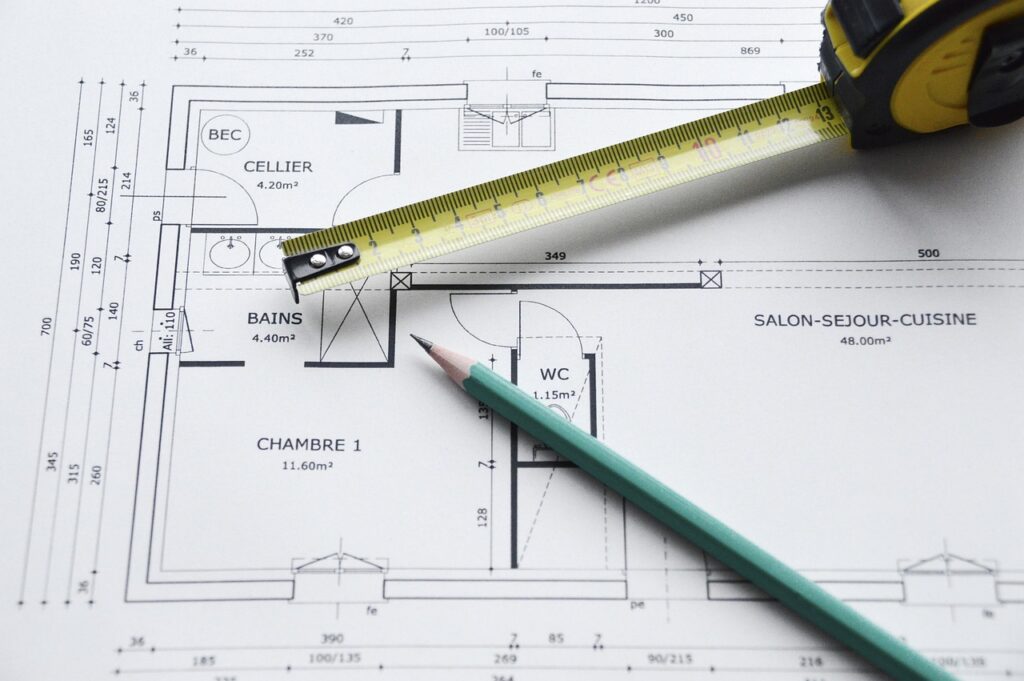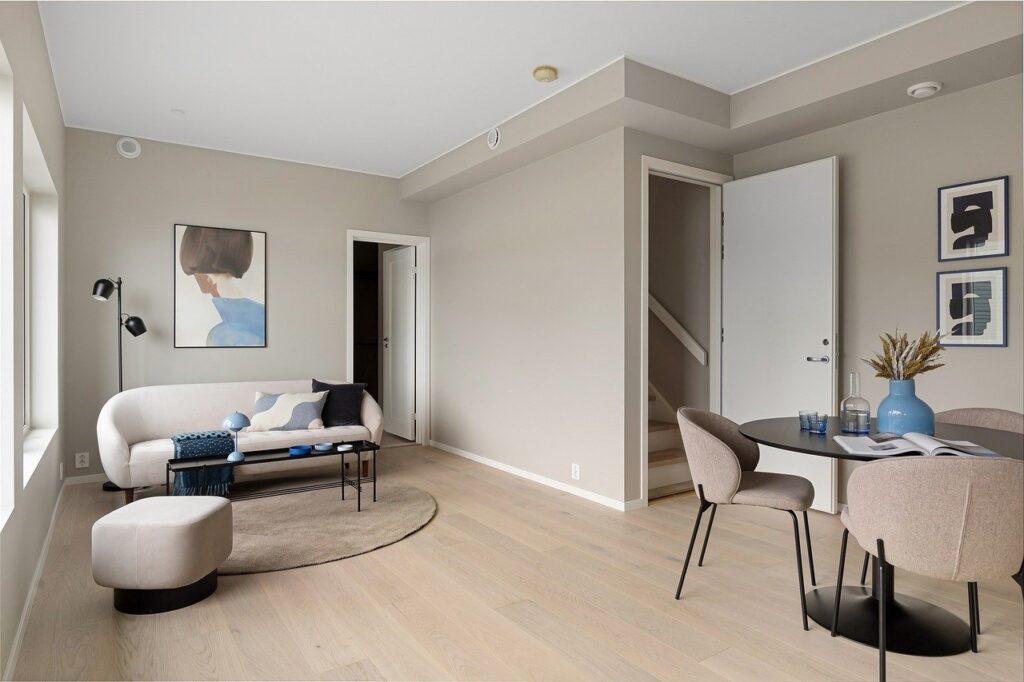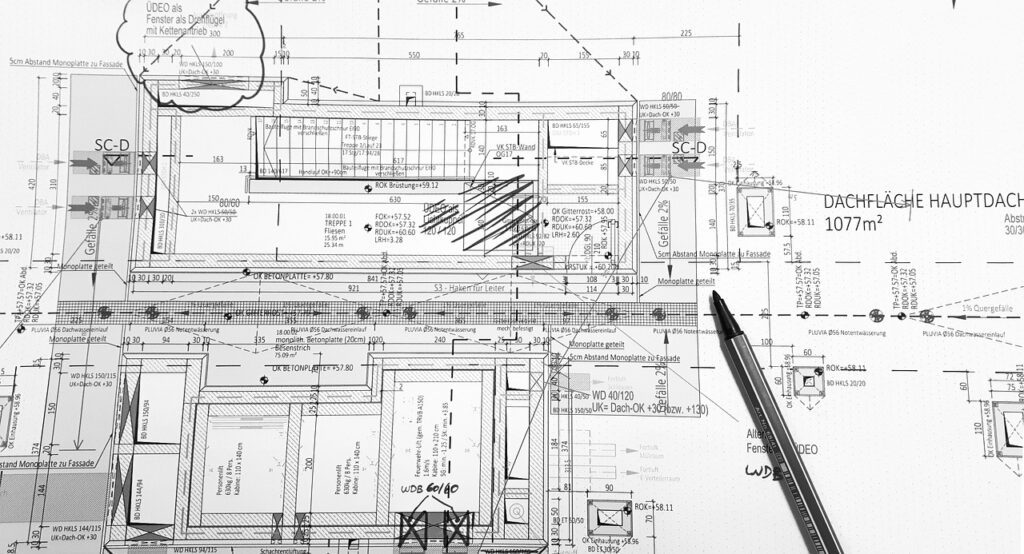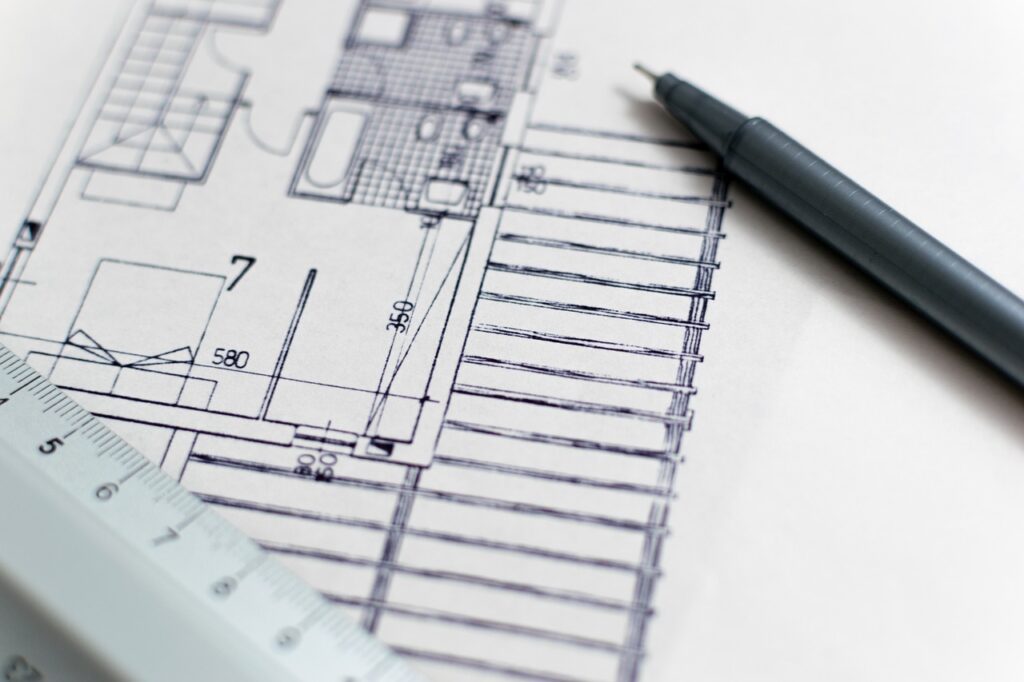Building a property in Koh Samui is not just an investment in a beautiful tropical paradise; it’s the chance to create a home that reflects your vision amidst stunning natural surroundings. Whether you’re building a luxurious villa or a cozy retreat, the allure of owning property on this picturesque island is undeniable. However, along with the excitement of building in Koh Samui comes the responsibility of understanding and adhering to the rules and regulations that govern construction here.

Koh Samui’s local government has implemented zoning laws and environmental regulations to protect the island’s beauty and ensure that development is sustainable and safe for both residents and tourists. Without a thorough understanding of these building regulations, you risk facing delays, fines, or even legal issues. This guide will walk you through the most important legal requirements, from zoning laws to the permit process, helping you navigate the complexities and ensure a smooth construction experience. By following these guidelines, you can build with confidence, knowing that your project complies with the necessary regulations, saving you time and avoiding costly setbacks.
Understanding Zoning Laws in Koh Samui
The first and most important step in planning any construction project in Koh Samui is to familiarize yourself with the island’s zoning laws. Zoning controls how land can be used and regulates where residential, commercial, or industrial developments may occur. Failing to comply with these zoning laws can lead to serious consequences, including hefty penalties, construction delays, or the complete suspension of your project.
Residential, Commercial, and Protected Zones
Koh Samui is divided into distinct zoning areas, each designed to manage specific land uses and preserve the island’s environmental balance. These zones include residential, commercial, and protected zones, each with different restrictions:
• Residential zones: These areas are set aside for private homes, villas, and housing developments. In residential zones, there are usually restrictions on the height and density of buildings to maintain a peaceful, low-impact environment. Residential zones are often located in quieter parts of the island, away from commercial activity.
• Commercial zones: These zones are reserved for businesses, hotels, and resorts. Commercial zones allow for denser development and typically accommodate larger-scale construction projects. However, larger commercial projects often require additional permits, including environmental assessments, before they can proceed.
• Protected zones: Some areas of Koh Samui, particularly along the coastline or in the mountainous regions, fall under protected zoning laws. These areas are subject to strict regulations to safeguard the island’s natural beauty. Construction may be prohibited or restricted to ensure that local ecosystems, beaches, and forests remain intact. In these zones, height restrictions are particularly common, and some areas may be entirely off-limits for development.
Building Height and Density Regulations
A crucial aspect of zoning laws in Koh Samui is the regulation of building height and density. To preserve the island’s natural skyline and limit the impact of development, specific zones—especially near the coastline—enforce height limits. In many coastal areas, buildings cannot exceed 12 meters in height to protect the views and maintain the island’s aesthetic appeal. Additionally, some hillside locations have even stricter limitations to prevent landslides and other environmental issues.
Density restrictions also play a key role in Koh Samui’s zoning laws. These rules determine how many structures can be built in a particular area, ensuring that the island’s infrastructure can cope with development. Overcrowding can put pressure on local utilities, roads, and natural resources, so zoning laws help manage population growth and construction in a sustainable way.
Before purchasing land or initiating any building plans, it’s essential to thoroughly research and understand the specific zoning laws that apply to your land. Consulting with a local expert or lawyer can help you navigate these regulations, ensuring that your project complies with all legal requirements and avoiding costly setbacks later in the process.
Environmental Regulations and Construction Impact
Given the stunning natural beauty of Koh Samui, the island’s government enforces strict environmental regulations to ensure that development does not compromise its ecosystems. Ignoring these regulations can result in severe fines, legal penalties, or even the shutdown of your project. Developers must take care to understand how construction can impact the island’s delicate environment, and what steps are required to mitigate negative effects.
Environmental Impact Assessments (EIA)
For large-scale developments or projects located near environmentally sensitive areas, an Environmental Impact Assessment (EIA) may be mandatory. The EIA is a comprehensive report that evaluates how a proposed project could affect the local environment, addressing concerns such as water management, waste disposal, and the preservation of wildlife habitats.
The EIA process involves a thorough analysis by environmental experts who assess factors such as the project’s proximity to protected zones, potential disruptions to natural water flows, and the sustainability of the planned construction materials. If your project is in or near a protected area, or if it exceeds a certain size, an EIA will be required by law.
Once completed, the EIA report must be submitted to Thai authorities for approval before construction can begin. This approval process can take several months, depending on the complexity of the project and the sensitivity of the location. Failing to submit an EIA when required can halt your project indefinitely, so it’s crucial to determine early on whether your construction will require this assessment.

Sustainable Building Practices
In addition to adhering to EIA regulations, incorporating sustainable building practices can benefit both the environment and the overall success of your project. Implementing eco-friendly strategies helps reduce the environmental footprint of construction, supports Koh Samui’s long-term environmental goals, and can even make your property more appealing to eco-conscious buyers or tenants.
Some sustainable practices to consider include:
• Eco-friendly materials: Use locally sourced, sustainable materials like bamboo, reclaimed wood, or natural stone to minimize environmental impact.
• Energy-efficient systems: Installing solar panels, LED lighting, and energy-efficient HVAC systems can reduce your villa’s energy consumption and appeal to environmentally conscious renters.
• Water conservation: Incorporating rainwater harvesting systems, low-flow plumbing fixtures, and gray water recycling can significantly reduce water usage, which is particularly important in tropical environments like Koh Samui.
By integrating these sustainable practices, you contribute to the island’s ecological preservation while also adding value to your property. Long-term, sustainable construction not only minimizes harm to Koh Samui’s natural beauty but also aligns with global trends toward eco-friendly living. Properties that prioritize environmental considerations are more likely to attract buyers and tenants who value sustainability, thus increasing your villa’s marketability.
Navigating the Building Permit Process
A crucial aspect of any construction project in Koh Samui is obtaining the appropriate building permits. Starting construction without the correct permits can result in heavy fines, costly construction delays, or even the demolition of any unauthorized structures. Ensuring compliance with local regulations from the outset is essential to avoid these pitfalls.
Obtaining a Building Permit
The process of securing a building permit in Koh Samui requires submitting detailed architectural plans and building specifications to local authorities. These plans must show that your project aligns with the island’s zoning laws, building codes, and safety regulations. Adhering to these guidelines is vital to ensure the project’s legality and structural safety.
The building permit application process typically involves several key steps:
• Submitting architectural plans: These must be submitted to the local district office for review and approval. The plans should include details such as the building’s dimensions, materials, and structural components.
• Ensuring land title clarity: Before submitting plans, verify that the land title is free of legal disputes or other claims. Any unresolved legal issues could cause significant delays in the approval process.
• Height and density restrictions: The construction plan must adhere to the island’s height and density regulations, especially in residential or environmentally sensitive areas. Failing to comply with these restrictions can result in the rejection of your permit application.
Because the application process can be complex, it’s highly recommended to work with a local architect or legal advisor who is familiar with Koh Samui’s permit requirements. These professionals can ensure that all the necessary documentation is submitted correctly, reducing the risk of delays or permit denials.
Special Permits for Hillside and Coastal Construction
If your project is located in a hillside or coastal area, the permit process may become more complex due to the environmental sensitivity of these regions. Building in these areas often requires additional permits to protect the natural landscape and prevent environmental damage.
For projects near the coastline, special approvals are needed to ensure that construction won’t cause erosion or disrupt local marine ecosystems. Additionally, developers may need to demonstrate how their project will protect against rising sea levels or storm surges.
On hillsides, the focus is on ensuring the stability of the land. Developers must account for factors like land drainage, erosion prevention, and landslide risks. Depending on the location, projects may require additional drainage systems or retaining walls to manage water runoff and protect the land’s structural integrity.
The application process for these areas can involve more detailed assessments and longer approval times. It’s advisable to consult with local authorities and environmental experts early in the planning stages to understand the specific requirements for building in these sensitive areas. By addressing these concerns upfront, you can avoid delays and ensure that your project complies with Koh Samui’s stringent environmental protection regulations.
Building Safety and Construction Codes
In addition to zoning and environmental regulations, Koh Samui enforces strict building safety standards that all construction projects must follow. These safety codes are in place to ensure the structural integrity of buildings and the well-being of both residents and construction workers. Adhering to these standards not only protects the safety of the occupants but also ensures that your project passes local inspections and avoids potential legal issues down the road.
Fire and Structural Safety
When building in Koh Samui, compliance with fire safety regulations is mandatory. This includes the installation of fire exits, sprinkler systems, and the use of fire-resistant materials where necessary. These requirements are crucial, especially for commercial buildings, hotels, or multi-story residential properties, as they help prevent fire hazards and ensure safe evacuation in emergencies. Proper fire safety measures protect both property and lives, contributing to the long-term sustainability of your building.
Equally important is the adherence to structural safety regulations, which are designed to ensure that buildings can withstand the region’s environmental conditions. Koh Samui is prone to tropical storms, high winds, and heavy rainfall, making it essential that construction projects incorporate materials and techniques that provide durability and resistance to these natural forces. From reinforced concrete to hurricane-resistant windows, using the right materials and methods is key to building a resilient structure.
It’s advisable to hire a contractor with experience in navigating local safety codes and construction standards. An experienced contractor will know how to comply with inspections and regulatory requirements, reducing the risk of future safety violations or legal challenges.
Worker Safety and Labor Laws
Worker safety is a top priority in construction projects on Koh Samui, and all construction companies must adhere to Thai labor laws and safety regulations. These laws ensure that workers are provided with protective gear, including helmets, gloves, and harnesses, as needed. Additionally, construction sites must maintain safe working conditions, such as secure scaffolding, proper signage, and safe access points.
Thai labor laws also govern wages and working hours, ensuring that construction workers are compensated fairly and do not work in unsafe or exploitative conditions. Non-compliance with these regulations can result in severe penalties, including fines, project shutdowns, or delays caused by government investigations.
Hiring a reputable construction company that values worker safety not only ensures compliance with legal requirements but also helps maintain project momentum by preventing workplace accidents and delays.

How Heveatecture Can Assist with Koh Samui’s Building Regulations
When embarking on a construction project in Koh Samui, the complexity of navigating local building regulations and environmental laws can be daunting. This is where Heveatecture steps in as a valuable partner, offering not just design expertise but comprehensive guidance on complying with the island’s unique legal and environmental frameworks.
Heveatecture is deeply rooted in sustainable architecture, with a profound understanding of Koh Samui’s zoning laws, environmental impact assessments, and building safety codes. Their team is equipped to help clients navigate the intricate permit process, ensuring every aspect of the project—from land selection to final construction—meets all regulatory requirements while respecting the natural environment.
Tailored Solutions for Zoning and Sustainability
Heveatecture’s approach goes beyond merely adhering to zoning restrictions. Their designs are crafted with a keen sense of place, ensuring that your villa or property not only fits within legal guidelines but also harmonizes with the island’s natural beauty. Whether your project is located in a protected zone or in a hillside area, Heveatecture has the experience to balance sustainable practices with creative, modern architecture, all while respecting local height and density limitations.
By leveraging their expertise in environmentally conscious building techniques, Heveatecture ensures that your project aligns with Koh Samui’s environmental regulations. Their use of eco-friendly materials, energy-efficient designs, and water management systems minimizes the project’s ecological footprint while enhancing the property’s appeal and value. This thoughtful integration of sustainability and compliance reflects Heveatecture’s commitment to both their clients and the island’s long-term environmental health.
Ensuring Compliance with Safety Standards
Safety is another cornerstone of Heveatecture’s services. Their team is adept at meeting the structural and fire safety regulations required for building on Koh Samui. From implementing the necessary fire safety measures to ensuring that all structures are built to withstand the region’s tropical storms and challenging weather conditions, Heveatecture provides the peace of mind that your property is built to the highest safety standards.
In addition, Heveatecture is highly experienced in managing worker safety on construction sites, ensuring compliance with Thai labor laws. They prioritize safe working conditions and ethical labor practices, reducing the risk of delays or legal issues related to construction.
Choosing Heveatecture means partnering with a firm that not only designs exceptional spaces but also navigates the complexities of building regulations with ease. By working with a trusted local company that understands the intricacies of Koh Samui’s development landscape, you can ensure that your project moves forward smoothly, stays compliant, and delivers a lasting impact.

Conclusion
Before embarking on any construction project in Koh Samui, it’s essential to familiarize yourself with the island’s rules and regulations. From zoning laws and environmental assessments to the permit process and building safety standards, understanding the legal framework is crucial to ensuring that your project runs smoothly and without costly interruptions.
Working with experienced local professionals, such as architects and legal advisors, is a practical approach to navigating these regulations with confidence. They can help you avoid common pitfalls, ensuring that your construction project complies with Koh Samui’s development guidelines. Whether you are building a private villa, a commercial property, or a resort, staying informed about the legal requirements is the key to a successful and legally compliant project.
10 FAQs on Rules and Regulations for Building in Koh Samui
Koh Samui’s zoning laws divide the island into residential, commercial, and protected areas, each with specific regulations on land use and building restrictions.
Foreigners cannot own land directly in Thailand. However, they can lease land for up to 30 years or own buildings on leased land.
An EIA is a required report for large projects that assesses the environmental impact of construction on the surrounding area.
In certain areas, particularly near the coastline, buildings are limited to a height of 12 meters to preserve the natural landscape.
Special permits are required for coastal construction to ensure the protection of marine ecosystems and to prevent erosion.
The time frame for obtaining a building permit can vary, but it typically takes several months, especially if additional permits are required for sensitive areas.
Yes, hillside construction requires additional permits to ensure the land’s stability and proper drainage.
Buildings must have fire exits, fire-resistant materials, and sometimes sprinkler systems, especially in commercial buildings and hotels.
Yes, Thai labor laws apply to construction projects, ensuring fair wages, proper working hours, and safe conditions for workers.
Any significant changes to the approved building plans may require you to reapply for a permit or submit the modifications to the local authorities for approval.
